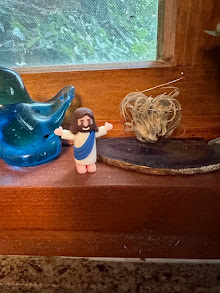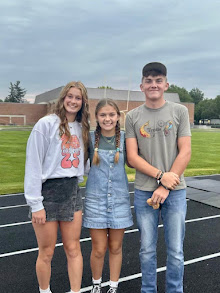But not 'The Control of Nature' by John McPhee. I don't know what I first read by John McPhee, but I fell in love with his writing because of geology. Most people would not consider geology a subject for popular nonfiction. If one has any knowledge of geology, it began and ended, most likely, during elementary school in the study of dinosaurs, fossils, and volcanoes. Perhaps one was fortunate enough to encounter the intriguing notion of plate tectonics or glaciers during a freshman class in earth science. Our family had more than a passing phase with geology; we picked up brachiopods and imprints of crinoids in the creek bed limestone of our farm in Callaway county. I took pride in memorizing at least the major eras in the geological time tables. I was as astonished and pleased by the revelations of plate tectonics as by the revelation of the word entropy. The majestic movements of giant chunks of crust reinforced my notion of almighty God as much as the equally sensible though disquieting notion of every single bit of matter and energy tending to disorder.
At any rate, I have read, would re-read if I were disciplined enough, and would recommend, any of Mr. McPhee's books on the geology of the United States. As a lover of the West, 'Basin and Range' and 'Rising from the Plains' were good companions for road trips.
My search for 'The Control of Nature', however, was occasioned by Blake's phone call today,'I'm driving across the Atchafalaya River.' Mr. McPhee writes a long essay about the Old River Control on the Atchafalaya. The Atchafalaya is the natural and shortest distance for the Mississippi river to travel to the Gulf. But we humans have had lots of reasons to keep the Mississippi the water highway it is, so the Atchafalaya remains hard to type and spell and the Mississippi is the ol' Man River. And New Orleans remains relevant.
Once I read about a big river, I need to see it, cross it, visit its towns and countryside. I learned about locks while growing up near Chicago and feared to tread over the drawbridges of the Chicago river. Bridges were the mile markers of the trip south to Missouri: the Kankakee River, the Sangamon river, the Illinois river, and then the Mississippi. From the crossing at Louisiana, I knew we were two hours from Jefferson City on the banks of the Missouri.
Moving north on the Missouri brought all its history nearer. Before I ever visited St. Joseph, I knew of the Pony Express and the Oregon trail. Later vacations followed the Oregon trail west along the Platte. Stops at Fort Kearney allowed us to walk across the river, so distinctive among Western rivers. Even in its modern manifestation, it isn't hard to imagine the emigrants slogging their way across the prairie flats with the sandy Platte hiding between the cottonwoods all across Nebraska. One of the competing routes across the country followed the Kansas rivers west. Unfortunately for those who took this route, the Smoky Hill river did NOT make it all the way to the mountains even though many maps, including one from 1860 on my wall, showed a watery road straight through. No big river? No Denver.
The Missouri is much changed, according to the literature. Old illustrations and writings describe a waterway of such hazard that its a wonder to me that the packet and steamer traffic west of St. Louis and all the way west to Montana ever amounted to a hill of beans. Watching the Missouri in flood after a strong summer storm front is a good proxy and terrifying. Traveling near its headwaters beyond Fort Benton is a pilgrimage of sorts; though our history is short, so much of it has occurred along the big rivers. The river at Fort Benton is an easy walk across a short span; it is placid on a summer day between its chalky banks. A state park exists somewhere near the Three Forks of the Missouri; more than once we've stopped to throw stones across the waters of the Gallatin, Madison and Jefferson.
The Missouri meets the Yellowstone above the South Dakota dams. Fort Union is a trader's fort, dating from the time of the fur trade and the mountain men. It was mosquito infested during our visit, which lent it a certain additional air of authenticity. I love forts and have to remind myself that they were lonely, isolated, dangerous and dirty back in the day. Fort Union is so far away from anything that it's past seems very near its present.
Still haven't followed the Columbia west to the Pacific. Haven't followed the Civil War trails through the whole Shenandoah Valley. Blake and Ben have been to Vicksburg. We've visited Fort Donelson, Franklin, Nashville, Stones River; the bloody natural barriers and boundaries of our tortured nation.
Maybe this attraction to water is part and parcel of living on the Plains. Perhaps its a part of our human genome: the desire for movement descended from the necessity of movement. I know that following the little blue lines on the map, whether on the road or on the frontispiece, will always lead to a story. And I'd really like to refresh my memory of the one in 'The Control of Nature'......
Maybe this attraction to water is part and parcel of living on the Plains. Perhaps its a part of our human genome: the desire for movement descended from the necessity of movement. I know that following the little blue lines on the map, whether on the road or on the frontispiece, will always lead to a story. And I'd really like to refresh my memory of the one in 'The Control of Nature'......















No comments:
Post a Comment